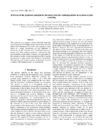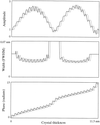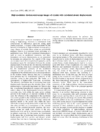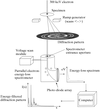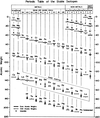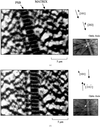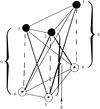issue contents
March 1999 issue
Moodie Festschrift
Dedicated to Professor A. F. Moodie on the occasion of his 75th birthday

Cover illustration: One quadrant of each of four fibre diffraction patterns from disordered polynucleotide fibres. The patterns were calculated for fibres with disorder as follows. Upper left: crystalline (no disorder); upper right: noncrystalline (completely disordered); lower left: discrete rotational disorder and correlated lattice disorder; lower right: random screw disorder. See Stroud & Millane [Acta Cryst. (1996), A52, 812-829].
biography

research papers
Green's-function techniques are used to obtain a real-space-series solution for elastic reflection high-energy electron diffraction from a crystalline surface. A renormalized perturbation expansion due to potential self-scattering is developed for the local real-space Green's function.


 journal menu
journal menu










